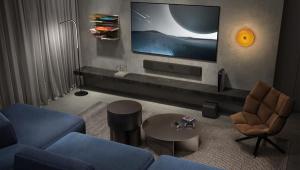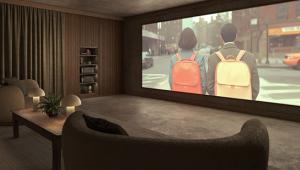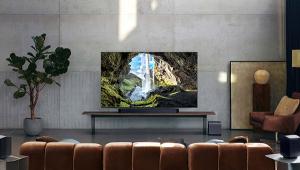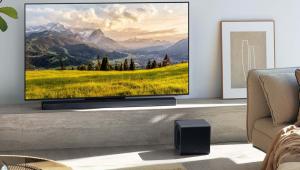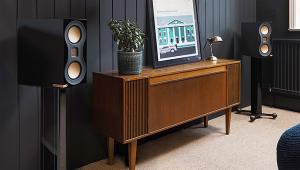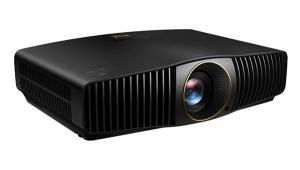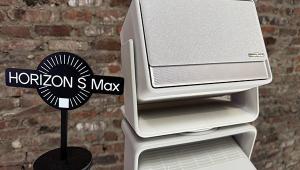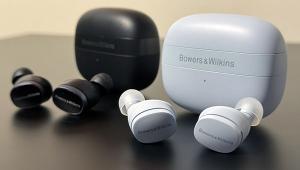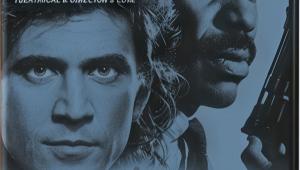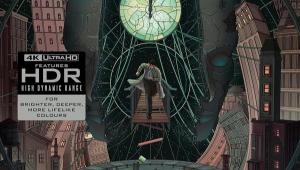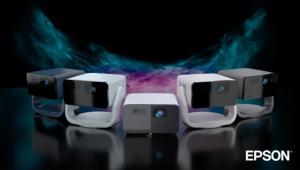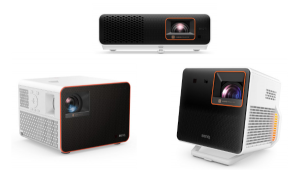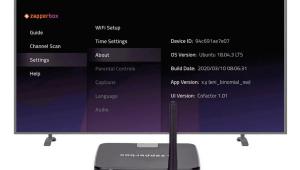Pioneer KURO PDP-6010FD 1080p 60" Plasma Display Page 3
You should, however, be careful of hours spent playing video games on a plasma. While such games often have a lot of motion, they also have large areas that don't change much during the game, such as frames, titles, and scoreboards. For games, there is a specially designed mode called Game AV, but you also might want to keep the |contrast level down and the Orbiter feature On.
Sports coverage on television has also developed a nasty habit of keeping a bright score bug or bar on the screen constantly. That's another good reason to avoid using bright modes like Dynamic, which might be tempting for this kind of programming since it's often watched in bright room lighting during the day. But I never felt the need for anything brighter than Standard mode on the Pioneer.
My experience with the new Pioneers, however, suggests that they are less prone to burn-in than some other plasmas, particularly bargain brands. But I did not try to test the PDP-6010FD to its limits to prove or disprove this subjective impression!
A Brief Modal Analysis
As mentioned above, of the six video modes available on the Pioneer, I much preferred the Movie mode (or, occasionally, Standard), modified by a few touch-up adjustments.
The Optimum mode is said to automatically adjust brightness of the image depending on the brightness of the viewing environment. In my viewing, conducted for the most part in a very dark room, I rarely found it useful. On the recently released DVD of Kenneth Branaugh's Hamlet, the low contrast night scene in the forest in which Hamlet meets with the ghost of his father (chapter 11) looked a little gray and flat in the Movie mode on the PDP-6010FD, but punchier (in a positive way) in Optimum.
But as soon as the movie transitioned to a brightly lit scene, the Optimum mode looked unnaturally vivid. The Movie mode, overall, definitely looked better, particularly in dim room lighting.
The Details
All of the measurements and viewing remarks in this report, unless otherwise noted, were made using my customized settings in Movie mode.
The Pioneer's picture is little short of jaw dropping. And a good share of the credit for this goes to the set's stunning black level and excellent shadow detail.
Like CRTs, plasma sets are self-illuminating (the phosphors that make up the pixels light individually, on cue). But unlike CRTs, the panel must be maintained in state of readiness—the idle luminance—in order to respond rapidly to the signal. This is the background black that you'll see on the screen any plasma display when it's turned on, the room lights off, and no signal on the input. That's as dark as the set will ever go.
Pioneer has managed to reduce this "black floor" by reducing the required idle luminance by 80%. This may well be the reason why, to date, I've tested no digital displays—front projector, rear projector, or flat panel, plasma, LCD, DLP, LCoS, or SXRD—that can match the Pioneer in its combination of deep, rich blacks and superb contrast, both ANSI and peak (see "Measurements"). And just as importantly, the uniformity of those blacks across the entire screen is superb as well.
Don't underestimate the importance of deep blacks. A set's black level lays the foundation for everything you see on screen. The lighter the black level, the less punch and depth you see in a video image.
Audiophiles often use visual analogies when describing sound quality. One of the desirable characteristics of a great audio system is its ability to produce a "black background," even when the program material is highly active.
That's even more literally applicable when it comes to great video performance. Up to now it has been elusive in most new digital video displays. Some can do it quite well. Those that don't quite measure up can get by on the basis of their brightness They overpower, as it were, their lack of truly deep blacks. The eye can be remarkably forgiving and even easily fooled into seeing great blacks when they are not, in fact, there.
There's no fooling around with this Pioneer.
Shadow detail is just as important as absolute black level. Without it, you simply get a muddled mess, with dark grays crushed into black. This can look impressive, but the more you watch the more you notice the lack of differentiation in very dark scenes.
This Pioneer has the deepest blacks and shadow detail I've tested, apart from two or three of the best CRT front projectors ever made.
One of the best tests I've ever seen for this came to me recently by way of a new Pioneer test disc. I referred to it previously in my review of the Pioneer PDP-5080HD 50" plasma. With the larger screen and higher resolution of the PDP-6010FD it's even more striking. It shows a photographer working in his studio. Everything in the studio is in varying shades of dark gray or black, including the photographer's black leather clothes. The details are incredible, and all the more amazing because of their dark, monotone nature. Sure, Pioneer would not have put such a scene on a demo disc without knowing that the new sets would excel with it. But competing displays struggle with this image, capturing its details only by lightening the scene too much, rendering everything in mid-gray shades rather than black and dark gray.
The Pioneer exceeds in other areas as well, though none of them are as dramatic as its state-of-the-art black level and contrast.

